Health
Special Report-UMTH: Looking at the Cancer Center Under Professor Ahidjo’s Led Management Team (3)

Special Report-UMTH: Looking at the Cancer Center Under Professor Ahidjo’s Led Management Team (3)
By: James Bwala
As a way to wrap up this piece, let me mention that the management team of Professor Ahmed Ahidjo is actively working to provide Nigerians seeking assistance with cancer treatment with the greatest possible care. The CMD has taken concrete action and made public statements to support the training of doctors who specialize in clinical oncology and related fields. If only to find water, the CMD might go anywhere and crack the rock. An official count of oncology or general surgeons in Africa could not be located after searching through reports on cancer-related topics. In 2010, a thorough analysis of the literature from sub-Saharan Africa (except from South Africa) on the state of surgery in the region indicated that there were just under two surgeons for every 100,000 people living there. For comparison, there were more than 35 surgeons in the same number in England.
As a result, surgery and anesthesia were performed—and are still performed—in many district hospitals by non-physicians who received special training for the job. The majority of oncologic surgery was carried out by general surgeons in referral hospitals. According to the study, the large-scale emigration of medical school graduates and the lack of surgically specialized programs in many African nations were the main causes of the low number of surgeons in the region.
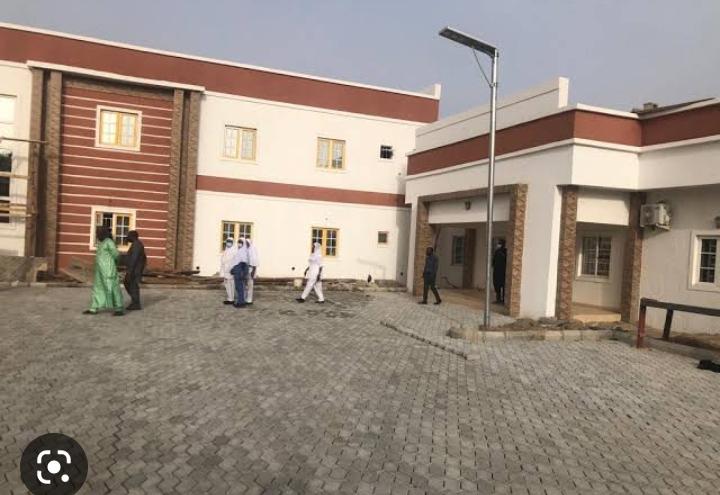
Many Nigerians are now wondering how Professor Ahmed Ahidjo was able to reach the ground under his leadership in hospital management at the University of Maiduguri Teaching Hospital, which prides itself as the “Centre of Excellence”. We also made inquiries. How many radiation facilities are currently operating in Africa? Are these covering the need for cancer therapy sufficiently? How many additional units will be necessary? And so on. Radiotherapy plays a major role in the curative arsenal of a cancer unit.
When examining the primary therapeutic approaches utilized to treat cancer patients, it was discovered that surgery was the primary approach in 49% of cases, radiation was the primary approach in 40% of cases, and chemotherapy was the primary approach in the remaining 11% of cases. According to a survey conducted in the high-income nation of Australia, little more than 52% of cancer patients required radiotherapy as part of their treatment regimen. However, it is believed that up to 60% to 70% of new patients in low-income countries require radiotherapy due to a lack of surgical treatments and the high proportion of advanced-stage tumors that call for palliative care.

In light of this, only 277 external-beam radiation devices were registered for the African continent in the IAEA’s Directory of Radiation Centers in 2010. Of them, two nations—South Africa and Egypt—accounted for 60%. In addition, of the 52 nations surveyed, 29 African nations did not offer radiotherapy to cancer patients. According to the IAEA, more than 700 additional teletherapy machines would be needed on the continent given the estimated 713,206 cancer cases per year in Africa (according to GLOBOCAN 2008) and the fact that one teletherapy machine can treat 450 new cases of cancer annually.
There are currently no specific statistics available on the accessibility of chemotherapy drugs across the continent of Africa. In 2012 and 2018, an assessment of the situation in sub-Saharan Africa was made, which revealed a number of issues. All 22 of the chemotherapeutic medications on the WHO essential list are probably imported into the region, most of them as generics, but not all of the medications are always available. It is assumed that there is a severe scarcity of systemic anticancer drugs based on extrapolating the status of other critical medications on the WHO list, whose availability was proven to cover barely half of the demand. The scientists also discovered that, on average, the prices of pharmaceuticals in Africa were between 2.7 and 6.1 times higher than the prices used as international benchmarks. Finally, they calculated that there aren’t enough certified medical professionals available to give chemotherapy.
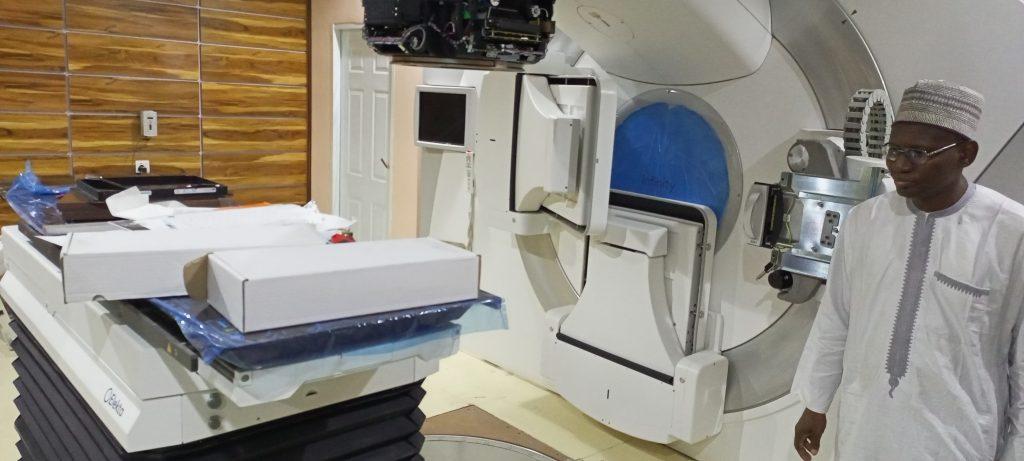
The situation is best illustrated by a review of the pharmaceuticals accessible for cancer therapy at a cancer center in Tanzania; over the time period studied, only about 50% of the specified medicines were available, which resulted in more than 70% of patients not receiving adequate therapy. The expense of purchasing the medications privately ranged from 1 to 7 months’ worth of income. Only a few patients were able to pay because the majority of them lacked insurance. Services in anatomic and clinical pathology are essential for cancer prevention. Pathology studies provide evidence for each stage of the diagnostic process, including the detection of malignant disease, diagnosis, staging, planning the surgical procedure, assessing management complications, and monitoring the outcome of treatment.
Furthermore, pathologic confirmation of the diagnoses is required for the cancer registry data to be taken seriously. For realistic planning of cancer control measures, this final input is crucial. Although there are no official statistics on the state of pathology services in Africa, the information that is currently available indicates a serious shortage in both quantity and quality. According to a 2012–20 informal assessment of pathology capacity in sub-Saharan Africa, the number of pathologists in the region was roughly 10% lower than that of specialists in fields equivalent to pathology in high-income nations.
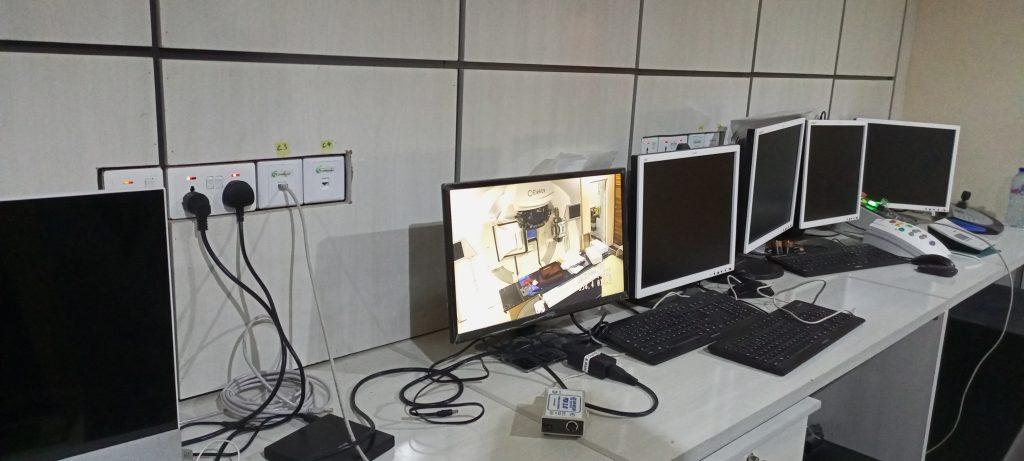
The African Pathologists Summit, held in 2013 in Dakar, also noted the lack of pathologists and technicians, the poor state of the equipment, the inadequate infrastructure, and the difficulties in getting laboratory supplies. An extensive assessment of cancer prevention in Africa was just released. The analysis reiterates that most malignancies in Africa with the highest incidence rates can be prevented. For instance, human papillomavirus vaccination and other population screening techniques can prevent cervical cancer; hepatitis B vaccination can prevent liver cancer; eliminating malaria and HIV infections can lower the risk of Burkitt lymphoma (HIV is also the primary cause of the high incidence of Kaposi’s sarcoma); and limiting sun exposure can prevent skin cancer.
The investigation did discover that the region’s preventative measures are insufficient. According to the literature, not enough people are aware that cancer exists as a disease, that it has risk factors and manifestations, and that there are methods for preventing and treating it. Additionally, a number of cultural aspects make it difficult to use preventative strategies developed for other sociocultural contexts. The infrastructure and staff in place to enable mass prevention efforts in the health sector are insufficient. Although vaccination programs against the human papillomavirus and the hepatitis B virus are conducted on the continent, they are mostly supported by funding from outside organizations like the United Nations or the Global Alliance for Vaccines and Immunizations.
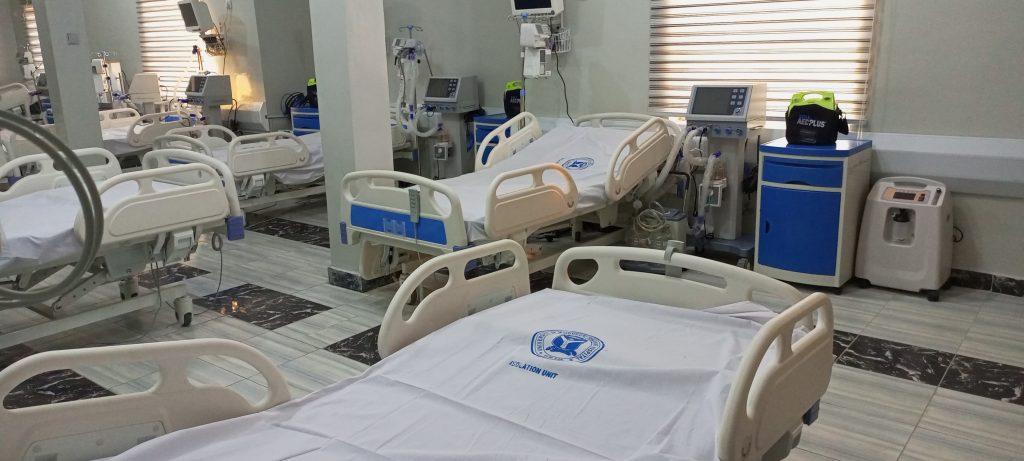
Governments lack the motivation to fully commit to the fight against cancer, and the majority of nations lack national cancer registries, which would provide accurate information on the scope and character of the issue. In a 2009 analysis of the global burden of cancer, the Economist Intelligence Unit discovered a significant gap between the cancer costs on the African continent, which accounted for just 0.3% of the global costs, and the continent’s share of the world’s new cases of cancer, which accounted for 6.4% of the world’s annual total. The amount spent on cancer treatment is disproportionately low in Africa since the majority of cancer costs are represented by medical expenditures (medications, medical procedures, charges for hospitalization, and outpatient visits).
READ ALSO: https://newsng.ng/the-plight-of-farida/
We were able to see the wider picture of the efforts being made by Professor Ahmed Ahidjo, Chief Medical Director of the University of Maiduguri Teaching Hospital, and his management team to find a solution to a more significant issue the world is currently facing thanks to his high-level explanation, study results, and real-world data. The newly opened Cancer Center at the University of Maiduguri Teaching Hospital (UMTH) would go a long way toward reducing the amount of regular medical travel that Nigerians engage in. The Cancer Center is the only facility in Nigeria with four bunkers and cutting-edge medical equipment to ensure that cancer patients receive top-notch care.
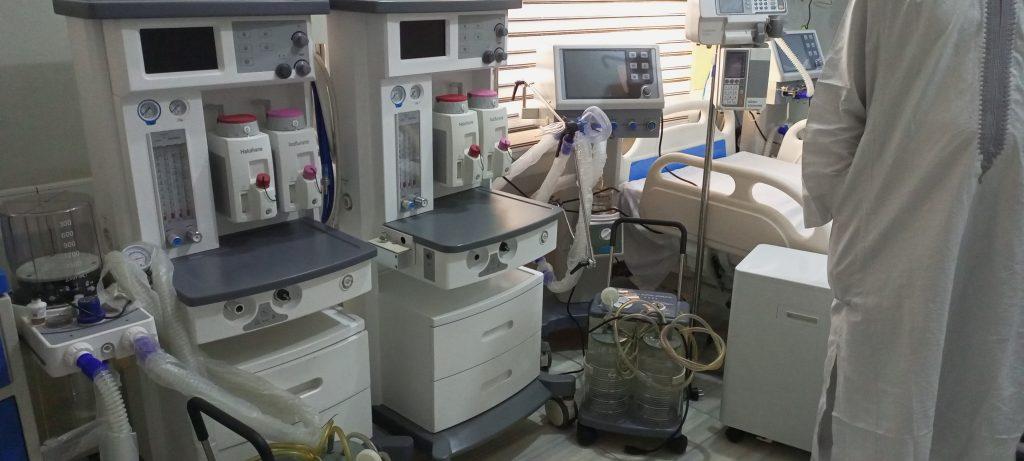
Recalls that Alh. Mamman Mamuda, the Permanent Secretary of the Federal Ministry of Health, said of the UMTH during the inspection of projects completed in the hospital that other cancer centers across the nation “are not up to the standard” of the UMTH Cancer Center and lack the capacity. From what I have observed on the ground, I can conclude that the UMTH is prepared to put an end to medical tourism in Nigeria, he claimed. We have already begun planning ways to make the UMTH a recipient of the Federal Government of Nigeria’s Cancer Support Fund.
The Cancer Center, which cost more than N5 billion to build, has the newest medical facilities in Sub-Saharan Africa, according to the Chief Medical Director (CMD) of the UMTH, Prof. Ahmed Ahidjo. He also noted that the goal of the UMTH is to prevent any medical issues from being referred to outside facilities, such as the Epic Hospital in the North East Region. We have two linear accelerators, two brachytherapists, and four bunkers here. We are bringing the first linear accelerators into Nigeria with the Nectar Infinite. The second one, HD Versa, for which the Federal Ministry of Health recently completed the purchase procedure for us, is the first to enter sub-Saharan Africa and the most recent method used globally.
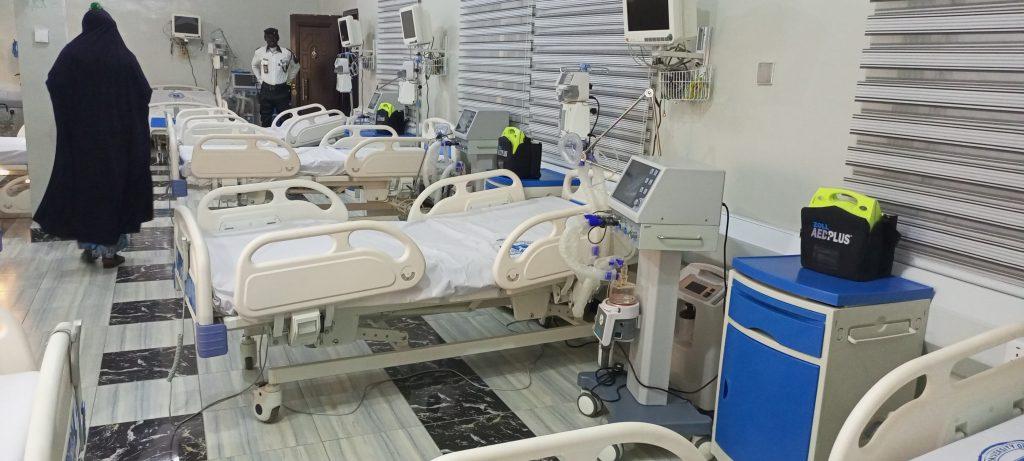
Alongside the Permanent Secretary, Director of Hospital Services Dr. Adebinpe Adebiyi praised the Cancer Center as one of the greatest in the nation and claimed that “it is beating the trends” set by other centers before it. Dr. Adebiyi disclosed that the management of UMTH has given the issue of staffing the new cancer center great priority, noting that the capacity building of professionals to staff the center has been completed. “When Nigerians travel overseas and encounter other Nigerians, they are treated with respect. Why are they not able to treat Nigerians here? It was her.
In Borno State, the CMD is being praised for the several initiatives he is putting in place to make Maiduguri a tourism hub for health in Nigeria, especially with the country’s largest cancer center and cutting-edge medical technology. The move and encouragement needed from the previous administration to the current one, under President Bola Ahmed Tinubu, is to have more federal presence at the University of Maiduguri Teaching Hospital through activities that would promote bigger dreams for a better health solution in Nigeria.
Special Report-UMTH: Looking at the Cancer Center Under Professor Ahidjo’s Led Management Team (3)
Health
Yobe to establish dialysis center in Gashua
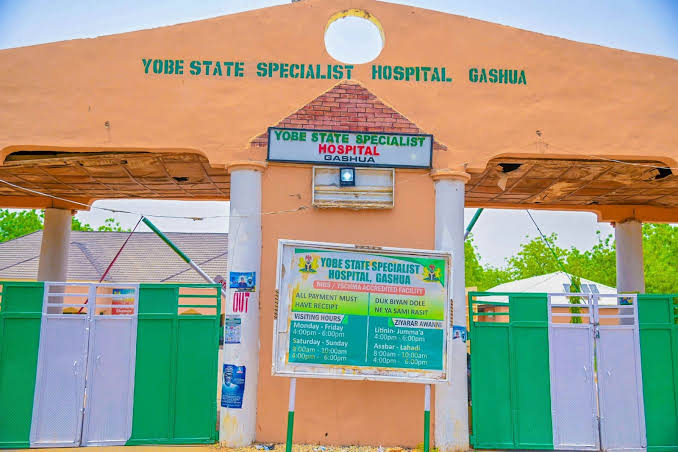
Yobe to establish dialysis center in Gashua
By: Yahaya Wakili
Pending the recommendations of the research being conducted by Bio-RTC in addressing the problem of Chronic Kidney failure in the state. The Yobe state government will establish additional succor to kidney patients with a Renal Dialysis Center in Gashua, the headquarters of the Bade local government area.
Yobe State Governor Hon. Dr. Mai Mala Buni CON, COMN, disclosed this in his 2026 budget proposal speech of #515.583 billion submitted to the Yobe State House of Assembly in Damaturu.
Governor Buni said the government will also construct a new general hospital in Potiskum to address the problem of overcrowding of patients at the specialist hospital.
According to him, the government will also intend to complete the rehabilitation and upgrade of the 36 remaining primary health care centers across the state in fulfillment of our campaign promise to provide one functional primary healthcare center in each of the 178 political wards.
He further said in the fiscal year, the government will embark on the provision of at least one model primary school in each of the 178 electoral wards in the state to improve basic education in the state.
He maintained that the modern markets in Geidam, Buni Yadi, Ngalda, Yunusari, and Machina will be completed and commissioned, adding that these markets will not only improve the commercial activities in the state but will further provide job opportunities to our teeming youths and increase the income of our people.
Governor Buni revealed that funds would be made available for the provision of power substations in 6 major towns of the state. In addition to the provision of solar-powered streetlights, 250 KVA, 500 KVA, and 800 KVA diesel soundproof generator sets would be distributed to government agencies across the state.
Yobe to establish dialysis center in Gashua
Health
UMTH: Another Cap for the Chief Medical Director: Prof. Ahmed Ahidjo’s Distinguished Govtech Trailblazer Award

UMTH: Another Cap for the Chief Medical Director: Prof. Ahmed Ahidjo’s Distinguished Govtech Trailblazer Award
By: Dr. James Bwala
The evening of October 10th, 2025, marked a significant milestone in the annals of the University of Maiduguri Teaching Hospital (UMTH), for emerging as the Best Federal Health Institution in ICT Integration. Also the Chief Medical Director (CMD), Prof. Ahmed Ahidjo, was honored with the title of Distinguished Govtech Trailblazer. This recognition, conferred by the Bureau of Public Service Reforms at a grand ceremony held in the Presidential Villa in Abuja, is a testament to his unwavering commitment to healthcare innovations and exemplary leadership within the public sector. Such an award, unprecedented in its scope and depth, underscores not only his personal achievements but also reflects the collective progress of UMTH under his stewardship.
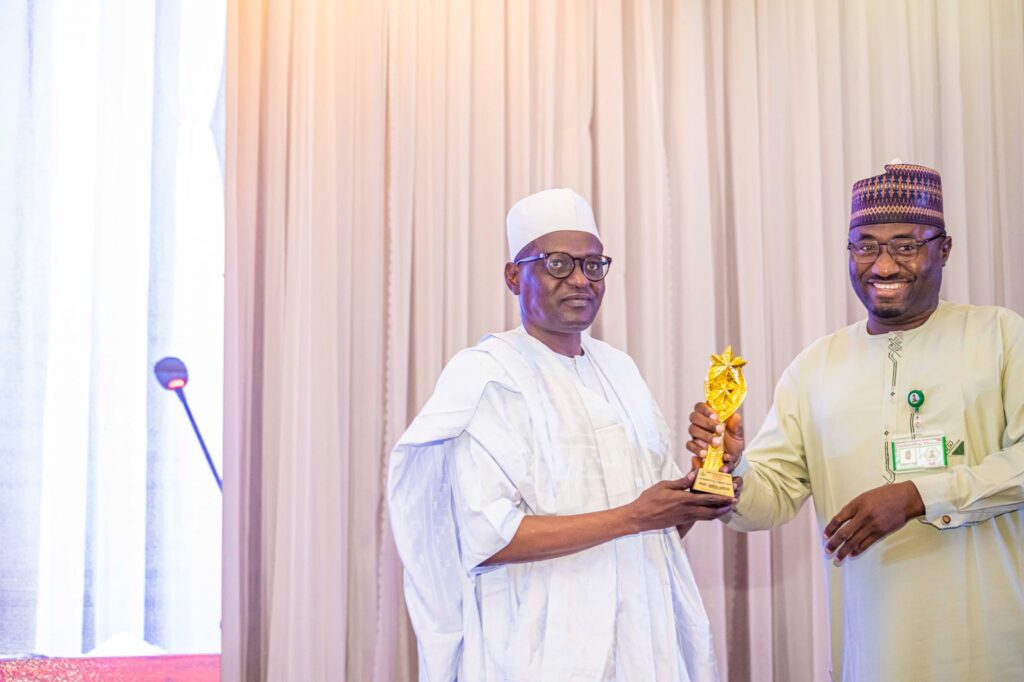
As guests filled the ornate hall of the Presidential Villa, anticipation buzzed in the air. The decor, infused with symbols of Nigeria’s rich cultural heritage, echoed the significance of the event. Among those present were notable figures from various sectors, including former board chairman at UMTH, Hadi Ukashatu Gumel; CMAC Prof. Modu Baba Kagu; DCMAC Clinicals Prof. Buba Faruq; PA to the CMD Dahiru Hammawa; Head of ICT Ismail Hashim; Engr. Maaji Shettima; and Mr. Peter, representative of Health in the Box. Their presence highlighted the collaborative efforts that characterize Prof. Ahidjo’s leadership style—a leadership that emphasizes teamwork, accountability, and innovation.
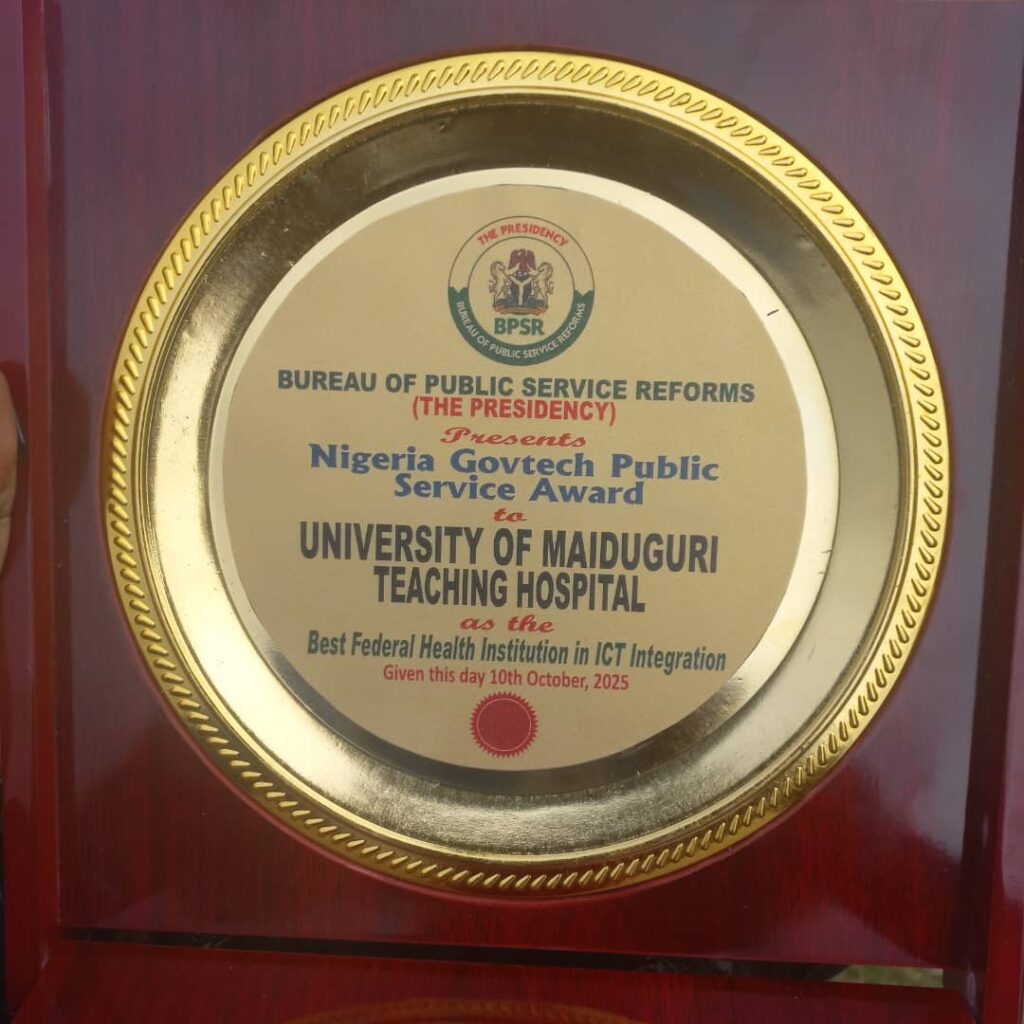
Prof. Ahidjo’s journey to this prestigious award is marked by a robust track record that distinguishes him as a goal getter. Since assuming the role of CMD at UMTH, he has championed numerous initiatives aimed at transforming the hospital into a beacon of excellence in healthcare delivery. His foresight in integrating technology into the healthcare process has not only streamlined operations but also improved patient outcomes significantly. Under his guidance, UMTH has embraced digital transformation, facilitating telemedicine services, electronic health records, and comprehensive data management systems—all pivotal in the ongoing evolution of healthcare in Nigeria.

The Distinguished Govtech Trailblazer award acknowledges those who have made substantial contributions to government technology advancements and public service reforms. Prof. Ahidjo’s tenure exemplifies this principle, as he led initiatives that have enhanced the efficiency of healthcare services across the region. For instance, his collaboration with local tech firms to develop the Health in the Box initiative embodies innovative solutions to pressing healthcare challenges. This program leverages technology to provide remote health services, bridging the gap between urban healthcare facilities and rural communities, thereby ensuring equitable access to essential medical resources.

The award ceremony itself was a reflection of commendable partnerships forged between government institutions and private entities, designed to uplift public service through technological advancements. As Prof. Ahidjo, represented by the former chairman of the board, ascended the stage to accept the award, there was a palpable sense of pride among attendees, particularly those from UMTH who had witnessed firsthand the relentless efforts of their chief medical director.

In his acceptance speech, Prof. Ahidjo expressed gratitude not only for the recognition but also for the collective effort of his team. He acknowledged the invaluable contributions of the hospital staff, whom he described as the backbone of UMTH’s successes. His emphasis on teamwork resonated throughout the audience, reaffirming the notion that individual accolades are often the results of cooperative endeavors. He further dedicated the award to his colleagues, emphasizing that the honor is reflective of the strides made by the entire institution.

The presence of key figures like DCMAC Clinicals Prof. Buba Faruq and Head of ICT Ismail Hashim underscored the breadth of support for Prof. Ahidjo’s vision. They encapsulated the sentiment that the award serves not just as recognition for past accomplishments but as a call to action for continued innovation and excellence in the face of ever-evolving healthcare challenges.

The event showcased a tapestry of emotions—pride, enthusiasm, and an invigorated sense of purpose. Attendees were treated to a series of presentations highlighting UMTH’s recent advancements, notably the implementation of smart technology in patient management and the establishment of a state-of-the-art emergency response center. These developments were evidence of how visionary leadership can steer a traditional healthcare system toward modernization.

Furthermore, the award also sparked discussions among stakeholders about the future of healthcare in Nigeria. Attendees, including representatives from government agencies and health technology firms, engaged in dialogue about opportunities for collaboration and investment in health tech. The consensus was clear: as Nigeria faces increasing healthcare demands and challenges, embracing technology is not merely beneficial; it is imperative.

The culmination of the event was a networking session where ideas flowed freely, fostering a spirit of collaboration that promises to enhance the landscape of healthcare delivery in Nigeria. Prof. Ahidjo’s influence extends beyond UMTH, as his leadership and vision inspire peers and upcoming healthcare professionals to strive for excellence in service delivery.

His recognition as a Govtech Trailblazer enriches the narrative of health reform in Nigeria, illustrating the pivotal role of innovative governance in public health. Prof. Ahidjo stands as a beacon for aspiring leaders, showcasing that with resilience, foresight, and collaboration, transformative change is attainable.

The Distinguished Govtech Trailblazer award conferred upon Prof. Ahmed Ahidjo not only celebrates his exemplary service but also symbolizes a broader movement towards modernization and efficiency within Nigeria’s healthcare system. As UMTH continues to flourish under his guidance, it is poised to lead by example, proving that strategic leadership and technology integration can radically enhance the quality of public healthcare services. The future appears bright, promising further advancements and recognition for the institution and its steadfast chief medical director, Prof. Ahidjo, who wears this new cap with unparalleled dignity and commitment to progress.
* James Bwala, PhD, writes from Abuja.
UMTH: Another Cap for the Chief Medical Director: Prof. Ahmed Ahidjo’s Distinguished Govtech Trailblazer Award
Health
UMTH wins the 2025 Public Tertiary Healthcare Facility of the Year Award.

UMTH wins the 2025 Public Tertiary Healthcare Facility of the Year Award.
By: Dr. James Bwala
The University of Maiduguri Teaching Hospital (UMTH) has once again demonstrated exceptional commitment to healthcare excellence by winning the 2025 Public Tertiary Healthcare Facility of the Year Award for the second time. This accolade underscores UMTH’s sustained efforts in providing high-quality medical services, advancing clinical research, and fostering an environment conducive to both patient care and academic development. Such recognition not only highlights the institution’s leadership within Nigeria’s healthcare sector but also reflects its pivotal role in addressing complex health challenges in the region.
This is a big congratulations to the CMD, Professor Ahmed Ahidjo, and his management team for another historic achievement. Winning this award consecutively signifies UMTH’s ability to maintain superior standards amidst evolving healthcare demands. The hospital’s integration of innovative treatment protocols and community-oriented outreach programs exemplifies best practices that contribute significantly to public health outcomes. As a teaching hospital, UMTH also plays a critical role in training future healthcare professionals, thereby ensuring a continuous supply of skilled practitioners dedicated to improving national health indices.
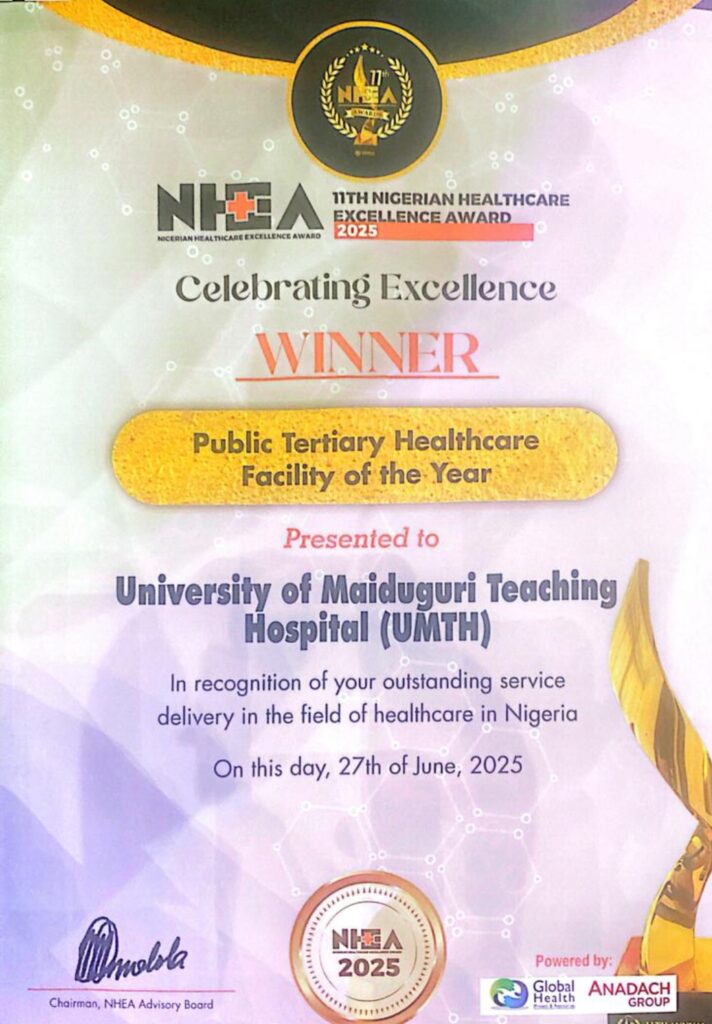
UMTH’s consecutive recognition as the top public tertiary healthcare facility reaffirms its status as a beacon of medical excellence and educational prowess in Nigeria. Maintaining such standards is essential for driving progress within the country’s healthcare infrastructure and enhancing patient care quality on a broader scale. UMTH’s strategic partnerships with global health organizations have facilitated the exchange of knowledge and resources, further enhancing its capacity to deliver cutting-edge healthcare solutions. This collaborative approach not only strengthens UMTH’s operational capabilities but also positions it as a model for other institutions aiming to elevate healthcare standards across the continent.
The hospital’s commitment to research and development has led to groundbreaking advancements in medical science, reinforcing its reputation as a leader in healthcare innovation and education. In addition, UMTH’s emphasis on patient-centered care has fostered an environment where individuals feel valued and heard. This patient-centered approach, combined with their ongoing commitment to excellence, underscores UMTH’s role as a pivotal institution in shaping the future of healthcare delivery in Africa.
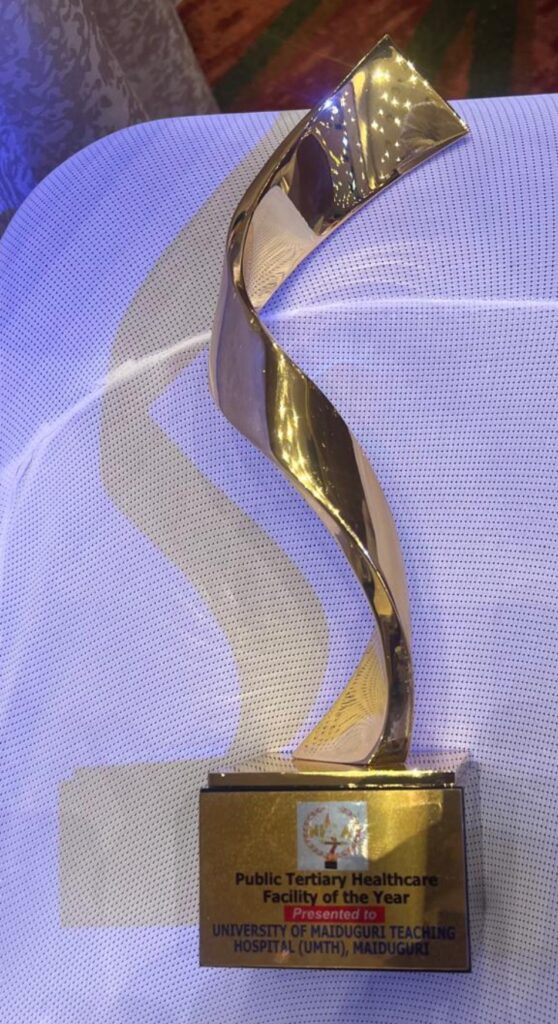
The hospital’s investment in state-of-the-art technology and infrastructure has also played a vital role in its ability to provide high-quality care and respond effectively to the evolving needs of the community. This dedication to leveraging advanced medical technologies and maintaining a patient-first philosophy has undoubtedly contributed to UMTH’s recognition at the national level, securing its place as a beacon of excellence in the healthcare sector.
READ ALSO: https://newsng.ng/the-plight-of-farida/
Professor Ahmed Ahidjo, the CMD, has printed his foot on the sand of history as UMTH’s success story. This success story serves as a testament to the power of strategic vision and dedicated leadership in transforming healthcare services for better societal impact. This achievement not only highlights the hospital’s ongoing pursuit of healthcare excellence but also serves as an inspiring model for other institutions aiming to elevate their standards of care and operational efficiency.
The award not only acknowledges the exceptional service delivery and innovative practices at UMTH but also underscores the hospital’s role in setting a benchmark for healthcare quality and patient satisfaction across Nigeria. This recognition is a testament to the hospital’s commitment to continuous improvement and its ability to adapt to the evolving challenges in the healthcare sector. This accolade not only highlights their exceptional service delivery but also reinforces their position as a leader in medical innovation and education within the region.
This commendation reflects UMTH’s unwavering dedication to nurturing future healthcare leaders through robust educational programs and cutting-edge research initiatives. UMTH’s dedication to fostering an environment of continuous learning and adaptation has enabled it to remain at the forefront of healthcare innovation. The recognition further solidifies UMTH’s reputation as a pillar of healthcare excellence. The hospital’s strategic focus on integrating advanced technology with patient-centered care has been pivotal in achieving these remarkable milestones.
UMTH’s proactive approach in collaborating with international health organizations has also played a significant role in enhancing its service delivery and research capabilities. This collaborative effort not only enhances their clinical practices but also ensures that the hospital remains at the cutting edge of medical advancements and global health standards. This recognition is not only a testament to UMTH’s achievements but also a motivation to continue pushing the boundaries of what is possible in public healthcare.
* James Bwala, PhD, writes from Abuja.
UMTH wins the 2025 Public Tertiary Healthcare Facility of the Year Award.
-

 News2 years ago
News2 years agoRoger Federer’s Shock as DNA Results Reveal Myla and Charlene Are Not His Biological Children
-

 Opinions4 years ago
Opinions4 years agoTHE PLIGHT OF FARIDA
-

 News8 months ago
News8 months agoFAILED COUP IN BURKINA FASO: HOW TRAORÉ NARROWLY ESCAPED ASSASSINATION PLOT AMID FOREIGN INTERFERENCE CLAIMS
-

 Opinions4 years ago
Opinions4 years agoPOLICE CHARGE ROOMS, A MINTING PRESS
-

 News2 years ago
News2 years agoEYN: Rev. Billi, Distortion of History, and The Living Tamarind Tree
-
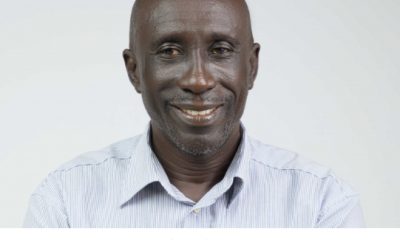
 ACADEMICS2 years ago
ACADEMICS2 years agoA History of Biu” (2015) and The Lingering Bura-Pabir Question (1)
-

 Columns2 years ago
Columns2 years agoArmy University Biu: There is certain interest, but certainly not from Borno.
-

 Opinions2 years ago
Opinions2 years agoTinubu,Shettima: The epidemic of economic, insecurity in Nigeria





